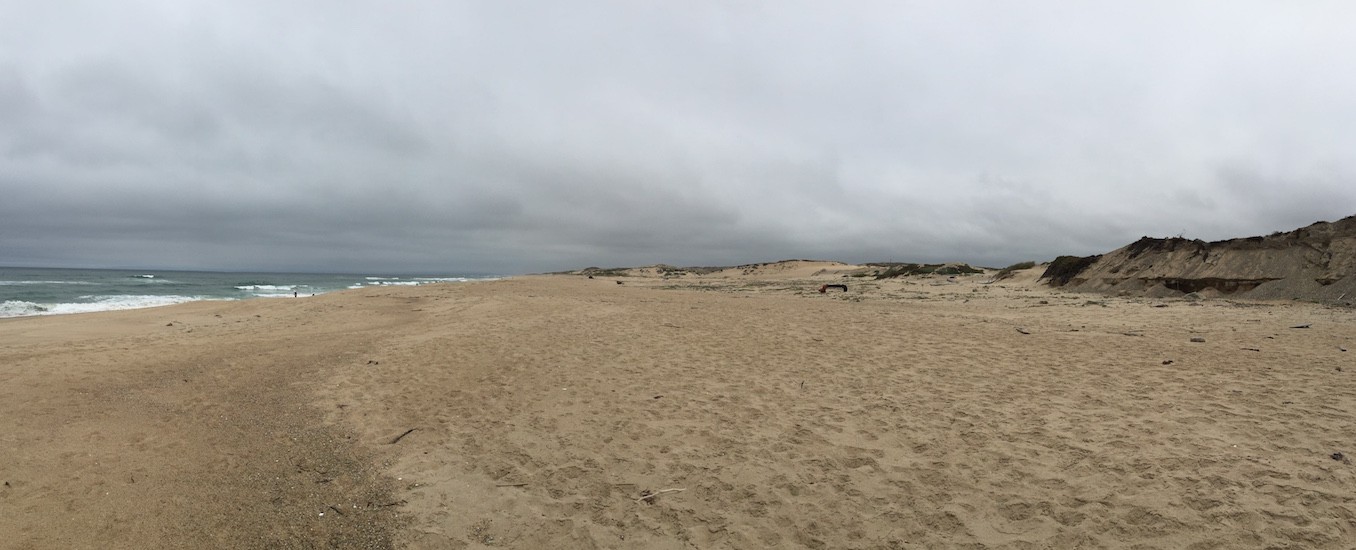
Last month, the California Public Utilities Commission (PUC) approved a new water desalination project for the Monterey Peninsula, by the investor-owned water utility California American Water Company (Cal-Am). With thanks to the Surfrider Foundation and other environmental groups who intervened in the PUC’s proceeding, the approved project is significantly smaller than originally proposed, includes measures to minimize brine impacts, and requires that the desalination facility be “net-zero,” meaning it will reduce and / or offset the project’s greenhouse gas emissions.
For over a decade, the Surfrider Foundation Monterey Chapter has been engaged in efforts to shape the water supply discussion on the Monterey Peninsula to help the community arrive at a water supply solution that resolves the depletion of local freshwater resources while also protecting and conserving coastal resources.
In 1995, Cal-Am was ordered by the California State Water Resources Control Board to cease its illegal overdraw of two of the area’s local freshwater sources: the Seaside groundwater basin and the Carmel River. The company was exceeding its legal water rights, and beneficial uses (like sustaining habitat for steelhead trout) and other users were being impacted. Thus began the long saga of determining solutions to solve this water supply deficit.
Surfrider came into the picture when the solution proposed was a large, 9.6 million gallon per day (MGD), energy-intensive seawater desalination project co-located with the then-Duke Power Plant. That proposed desalination plant would have relied on the once-through cooling water intake at the power plant, which was known then to negatively impact marine life that would get sucked in or caught on the screen, and which Surfrider was working to phase out across the state as an outdated technology.
Because Cal-Am is an investor-owned utility, it is regulated by the PUC. To proceed with a capital project, Cal-Am needed to receive a certificate of public convenience and necessity from the Commission. Given Surfider’s interest in protecting the water and coastal resources of the Monterey Bay, Surfrider has participated as an intervenor in the PUC proceeding, represented by outside counsel at Shute, Mihaly & Weinberger.
While the ultimate outcome does not go as far as it could have to minimize negative impacts from the project, earlier this month, the Commission adopted its decision, which is a significant improvement from the proposed 9.6 MGD plant with open ocean intakes. The PUC’s decision approves a 6.4 MGD seawater desalination plant which will indirectly draw water through environmentally-preferable slant wells to minimize impacts to marine life. This desalination plant is part of the broader Monterey Peninsula Water Supply Project, which also includes 3,500 acre-feet per year of supply contributed by the Pure Water Monterey Groundwater Replenishment Project, which will recycle wastewater.
Surfrider previously argued to the PUC and still believes that even a 6.4 MGD plant is far too large, and that there had not been a demonstrated need for a desalination plant of any size. However, key improvements are included as conditions in the PUC’s approval of the project, which will help to significantly reduce impacts:
• Slant well intakes, to reduce impingement and entrainment of marine life, are required.
• The PUC approved a brine discharge settlement agreement (entered into between Surfrider along with other parties and Cal-Am), which requires compliance with salinity standards established by California’s Ocean Plan Amendment, and requires mitigation for exceedances. The agreement establishes a salinity monitoring program that will indicate whether brine has been effectively dispersed and diluted to safe levels in the brine receiving waters.
• Greenhouse gas emissions will be mitigated, and Cal-Am must ensure that the project’s operational electricity use results in net zero greenhouse gas emissions. Cal-Am must meet this net zero mandate by: obtaining renewable energy from on-site solar photovoltaic panels and / or the Monterey Regional Waste Management District’s landfill-gas-to-energy facility; procuring renewable energy from off-site sources within California; procuring and retiring renewable energy credits; and / or through carbon offsets issued by an approved registry. (Mitigation Measure 4.11-1, Appendix D)
Edward Schexnayder, attorney representing Surfrider, notes, “The PUC's decision – which requires the plant to be carbon neutral, use slant wells located off the beach, and includes a brine monitoring protocol - is precedent setting and serves as a model for other desal plants around the state.”